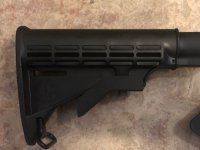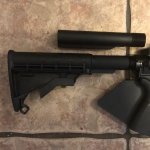THE DIFFERENCES BETWEEN COMMERCIAL AND MIL-SPEC BUFFER TUBES
The significant difference between the mil-spec and commercial AR-15 buffer tubes is the outer diameter of the stock-end, which will also determine the type of buttstock you buy.
At the buttstock end, the commercial buffer tube is .02” wider than the mil-specific buffer tube—1.168" vs. 1.148" diameter respectively. But at the receiver end, the mil-spec tube diameters are .015” wider than commercial spec tubes at 1.185” (including the height of the threads).
The buffer tubes also differ in their manufacturing processes. The mil-spec tube threads—produced from 7075 T6 alloys—are rolled into the metal, resulting in taller and stronger threads. Commercial tube threads, on the other hand, are constructed from 6061 T6 billet aluminum and are cut into the metal, producing slightly shorter and weaker threads but at a lower cost. Other differences vary from manufacturers, including type of metal used and the angle of the back of the tube.
Both carbine length buffer tubes and commercial buffer tubes (AKA by their correct name; Receiver Extension), use a carbine length buffer spring. Regarding length, there is no difference between a commercial buffer spring and a mil spec buffer spring.


